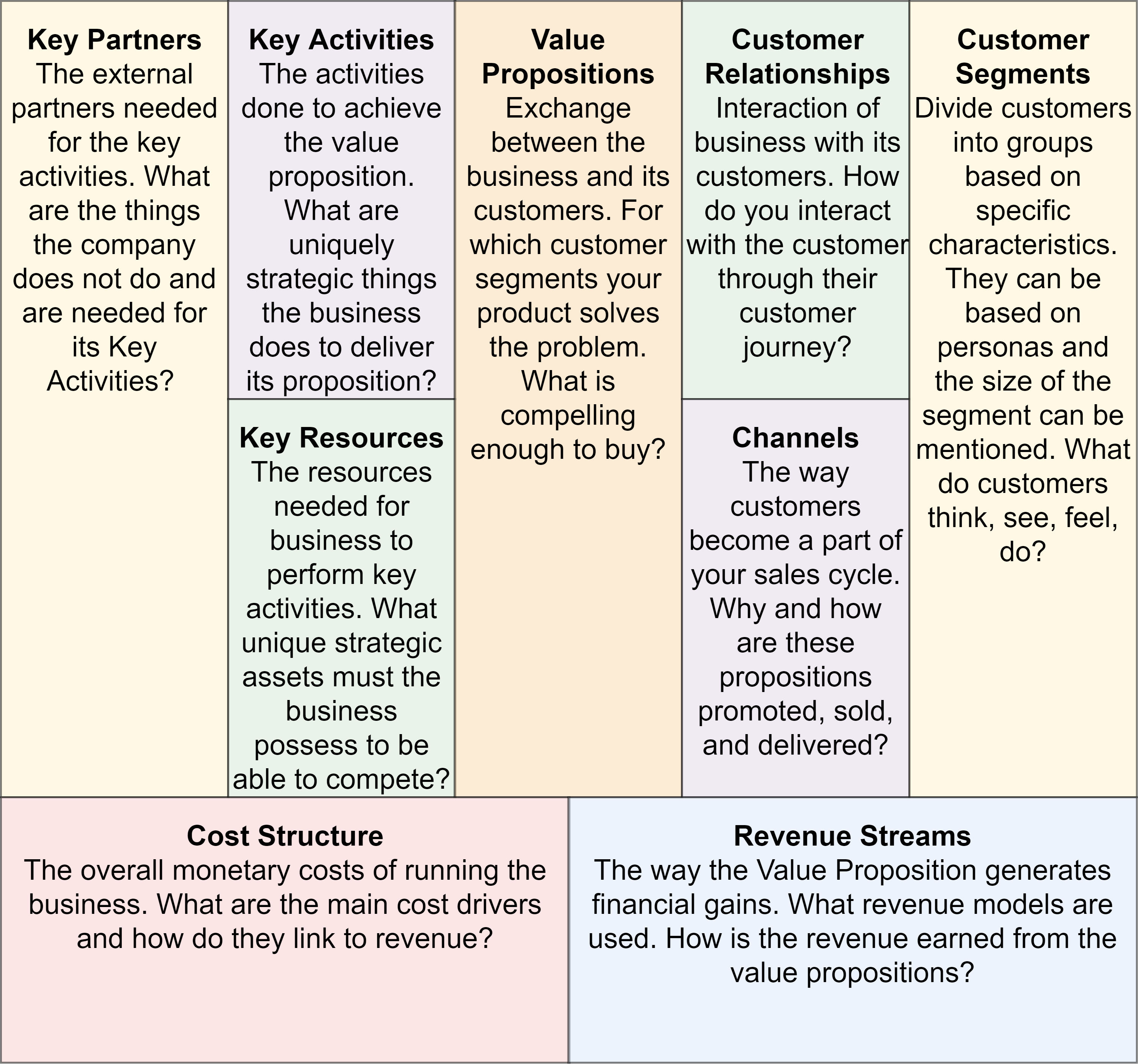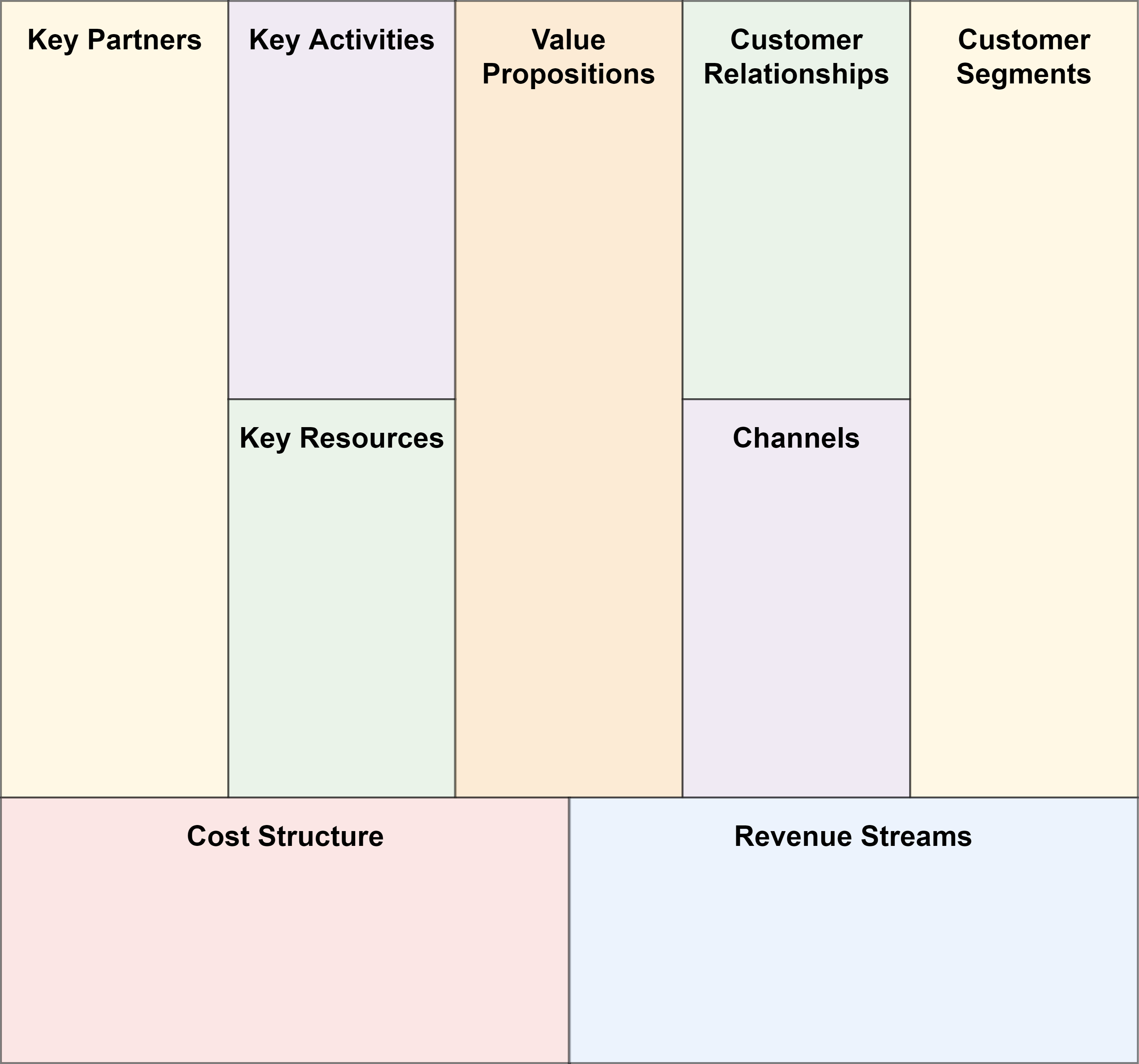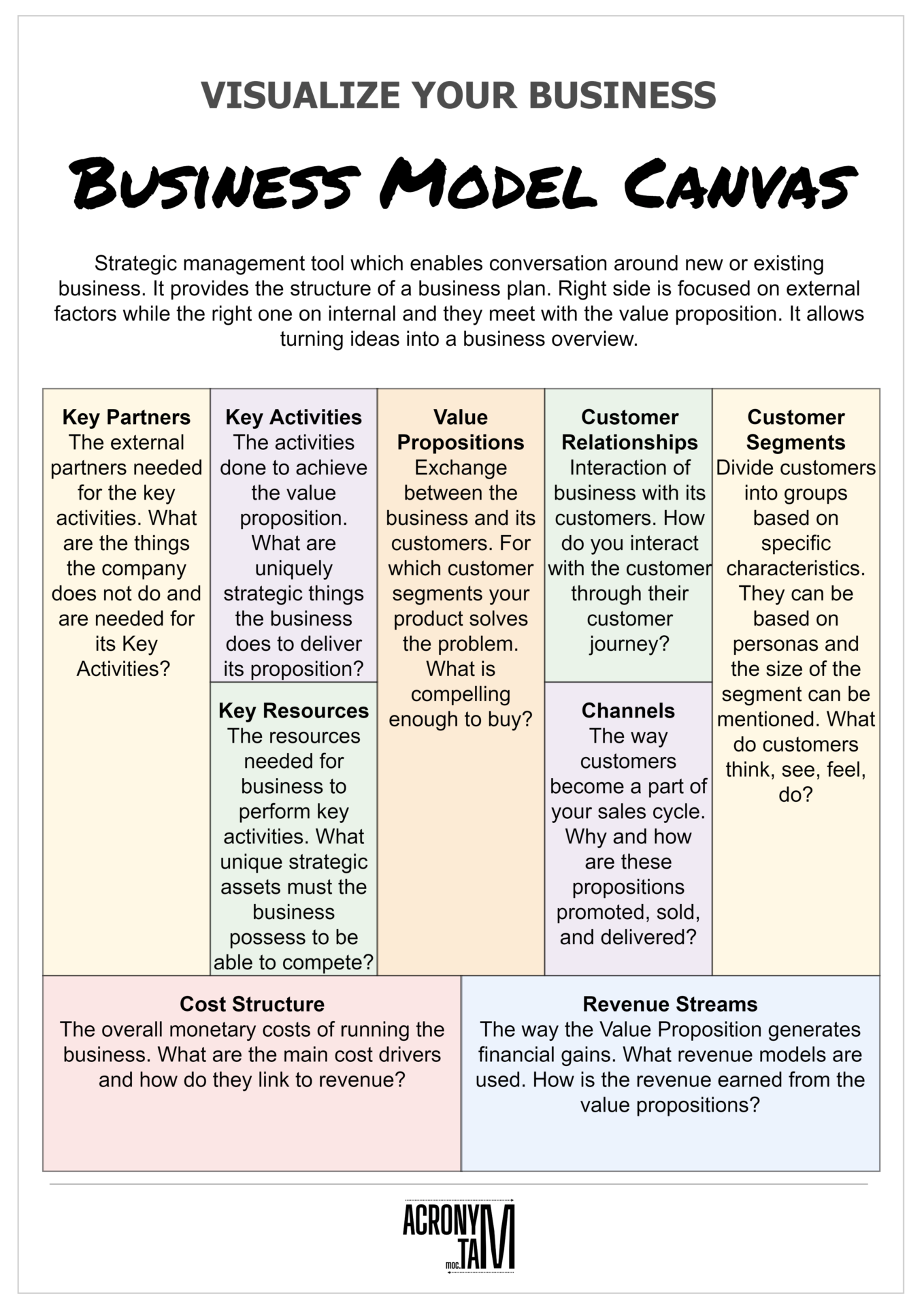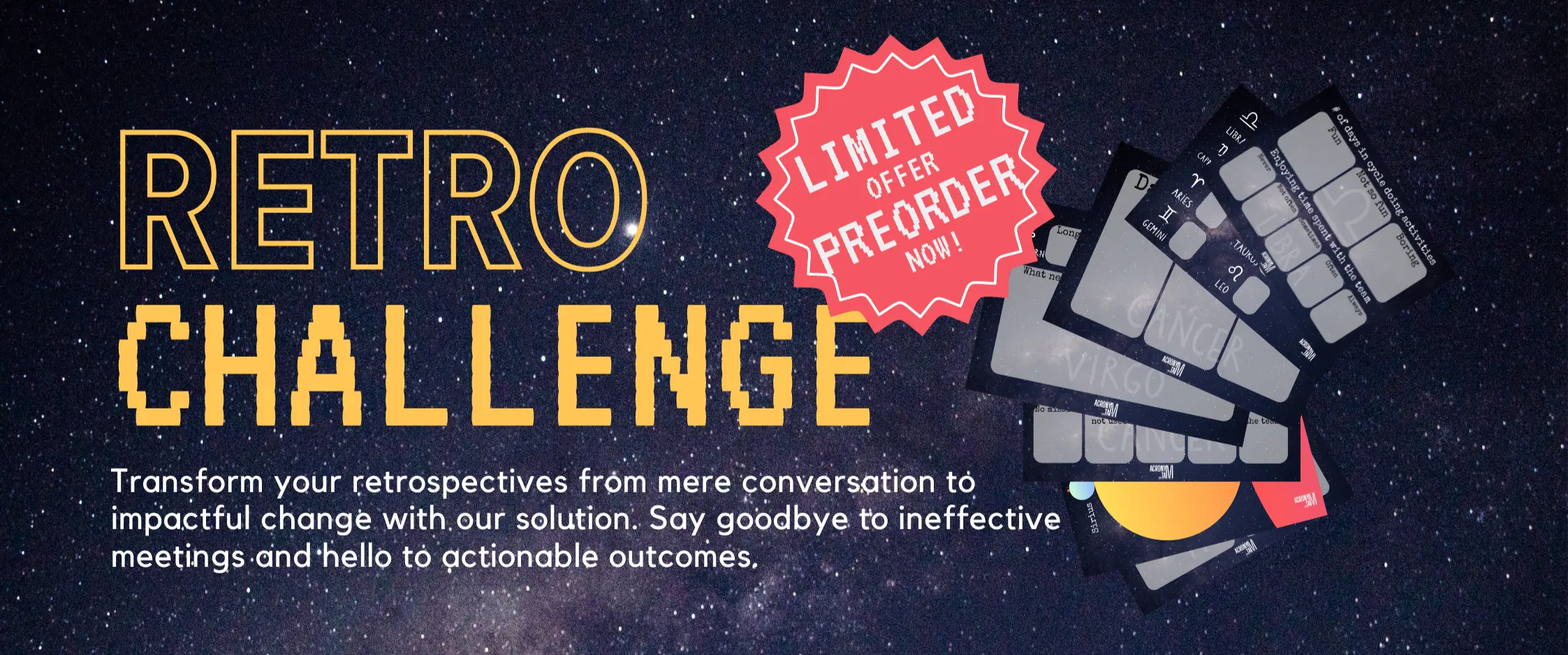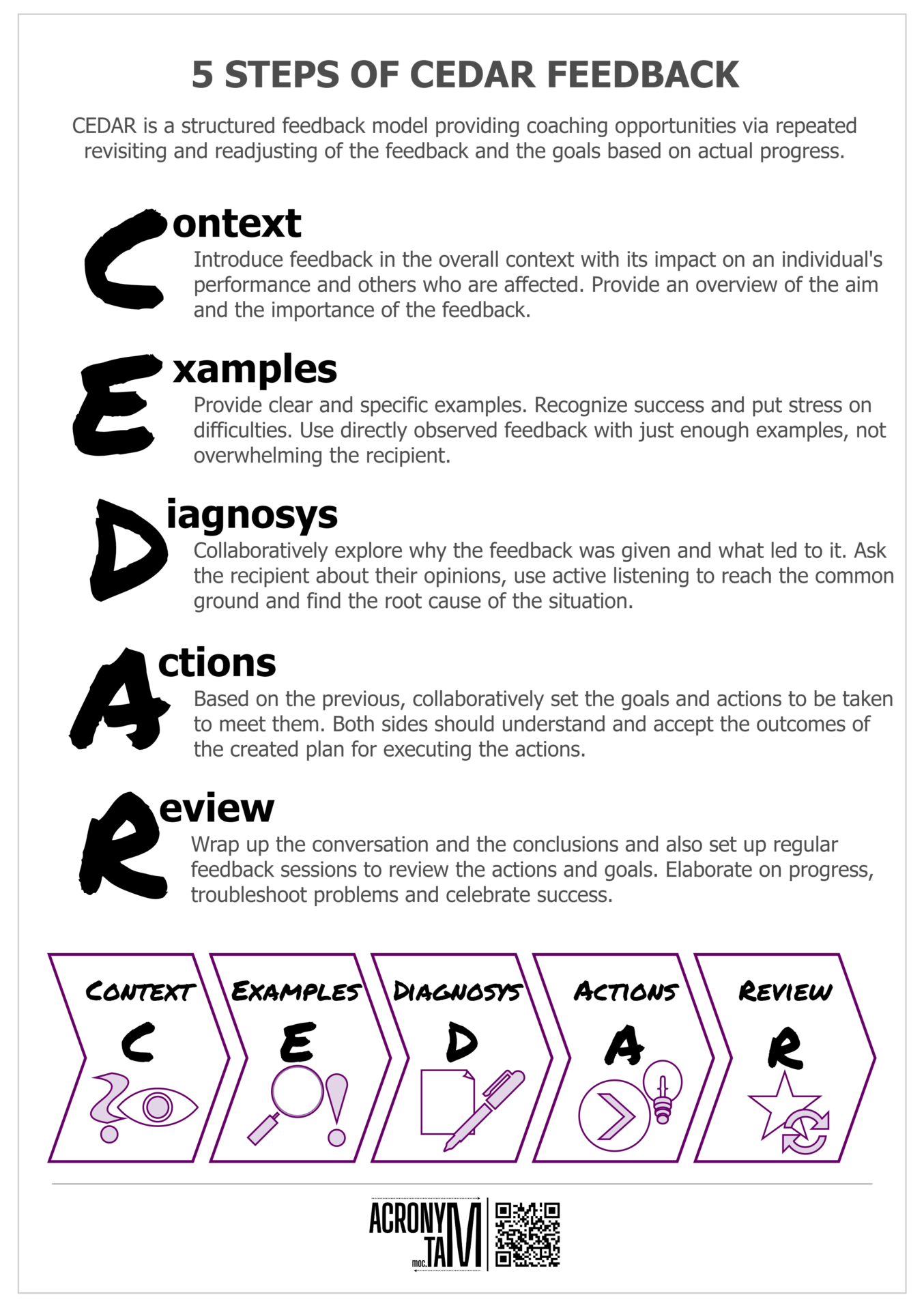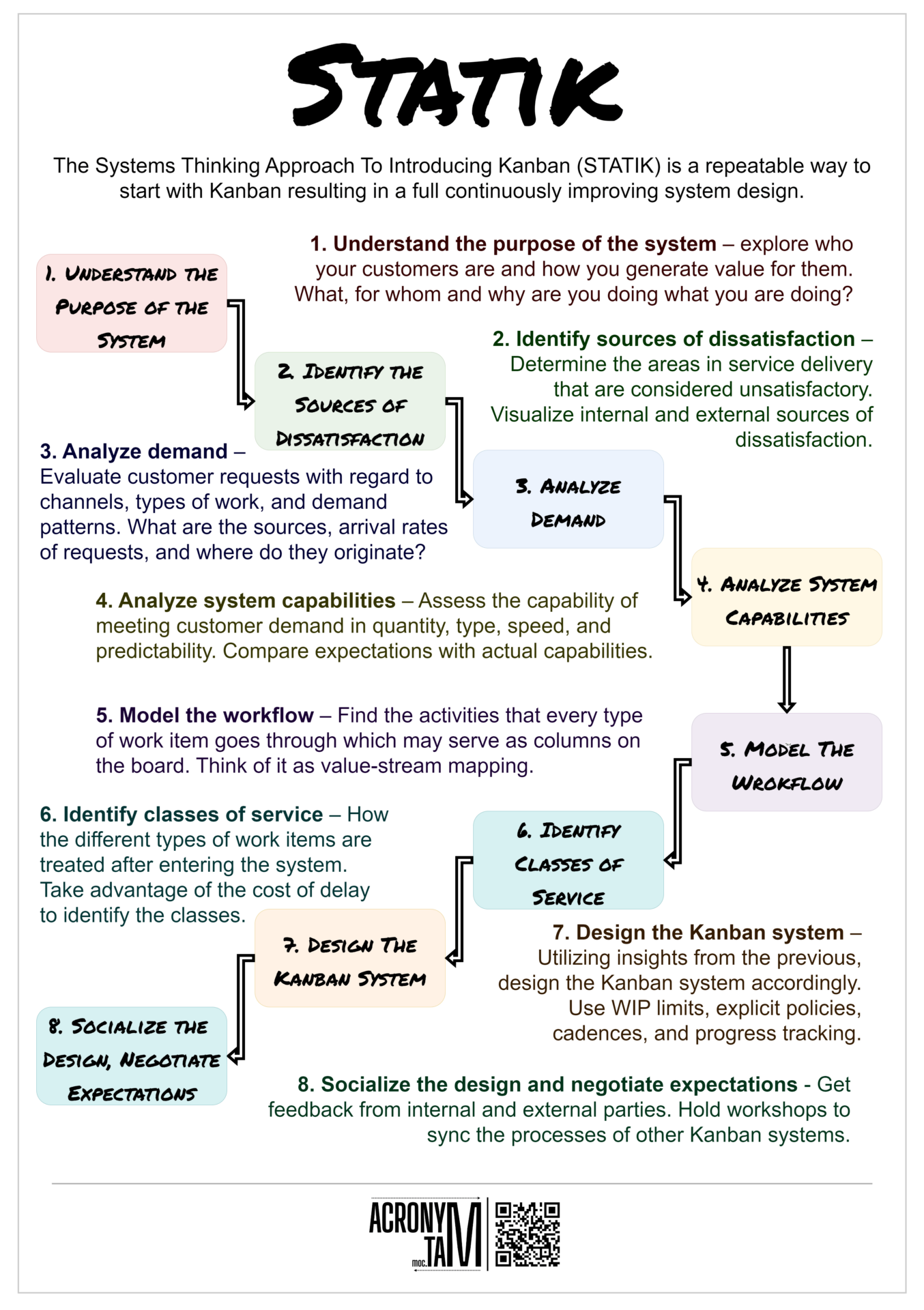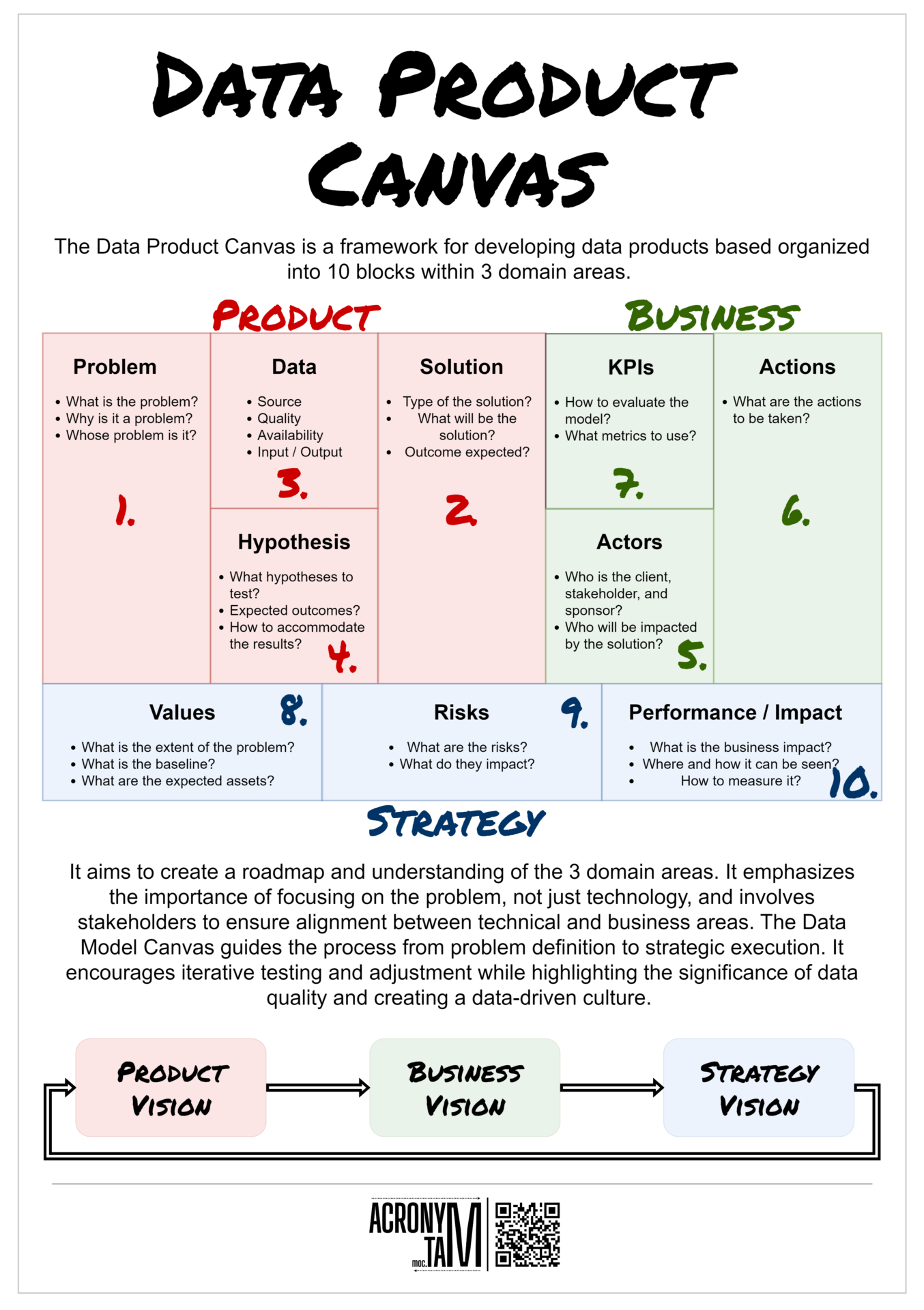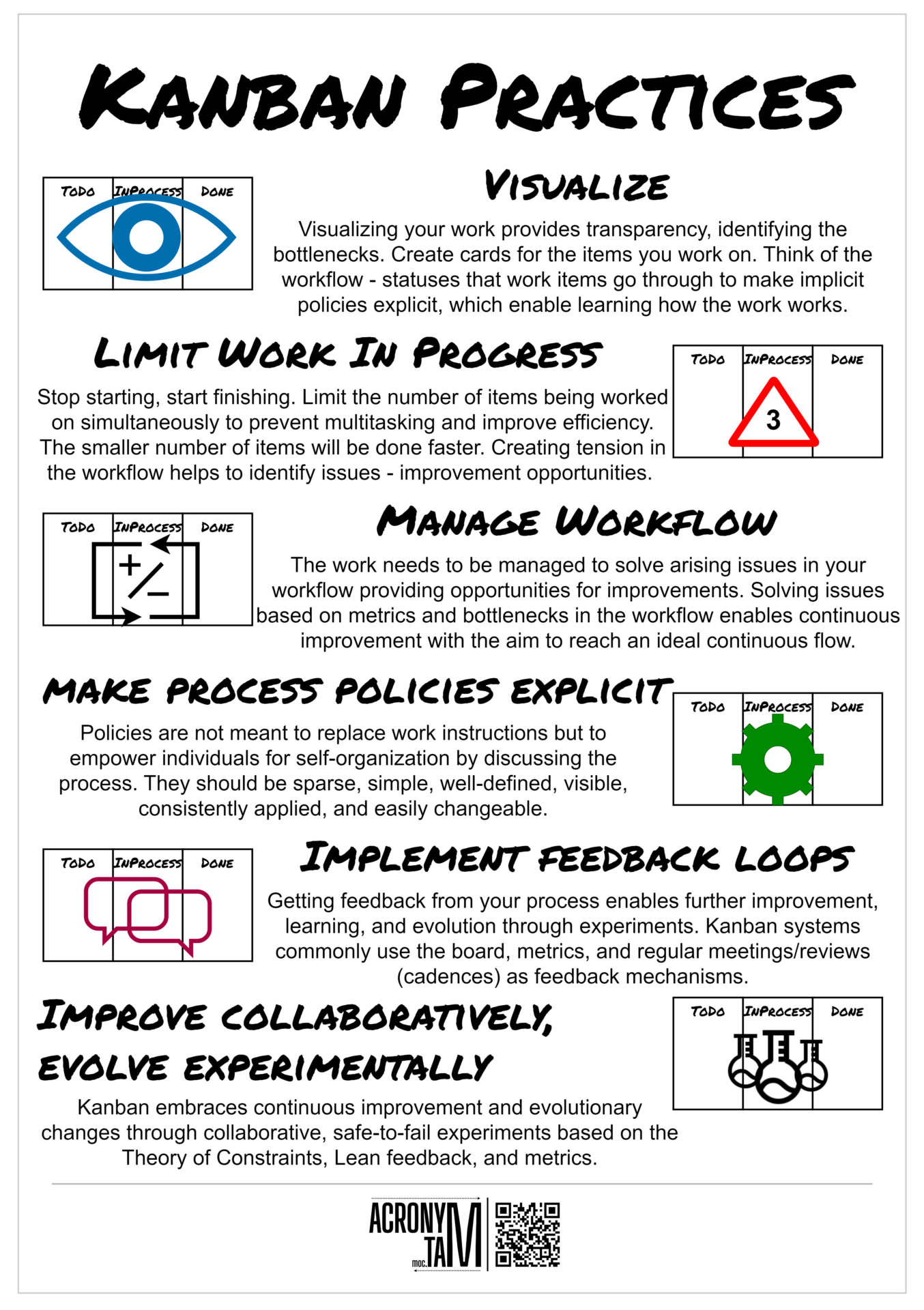Business Model Canvas
Article
Business Model Canvas (BMC)
Strategic management tool which enables conversation around new or existing business. It provides the structure of a business plan. Right side is focused on external factors while the right one on internal and they meet with the value proposition. It allows turning ideas into a business overview.
Value Proposition
Exchange between the business and its customers. For which customer segments your product solves the problem. What is compelling enough to buy?
Customer Segments
Divide customers into groups based on specific characteristics. They can be based on personas and the size of the segment can be mentioned. What do customers think, see, feel, do?
Customer Relationships
Interaction of business with its customers. How do you interact with the customer through their customer journey?
Channels
The way customers become a part of your sales cycle. Why and how are these propositions promoted, sold and delivered?
Key Activities
The activities done to achieve the value proposition. What are uniquely strategic things the business does to deliver its proposition?
Key Resources
The resources needed for business to perform key activities. What unique strategic assets must the business possess to be able to compete?
Key Partners
The external partners needed for the key activities. What are the things the company does not do and are needed for its Key Activities?
Cost Structures
The overall monetary costs of running the business. What are the main cost drivers and how do they link to revenue?
Revenue Streams
The way the Value Proposition generates financial gains. What revenue models are used. How is the revenue earned from the value propositions?
